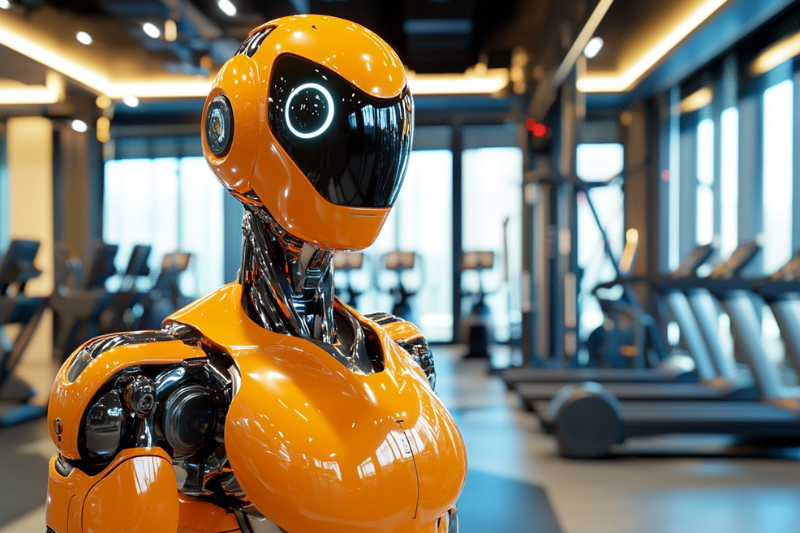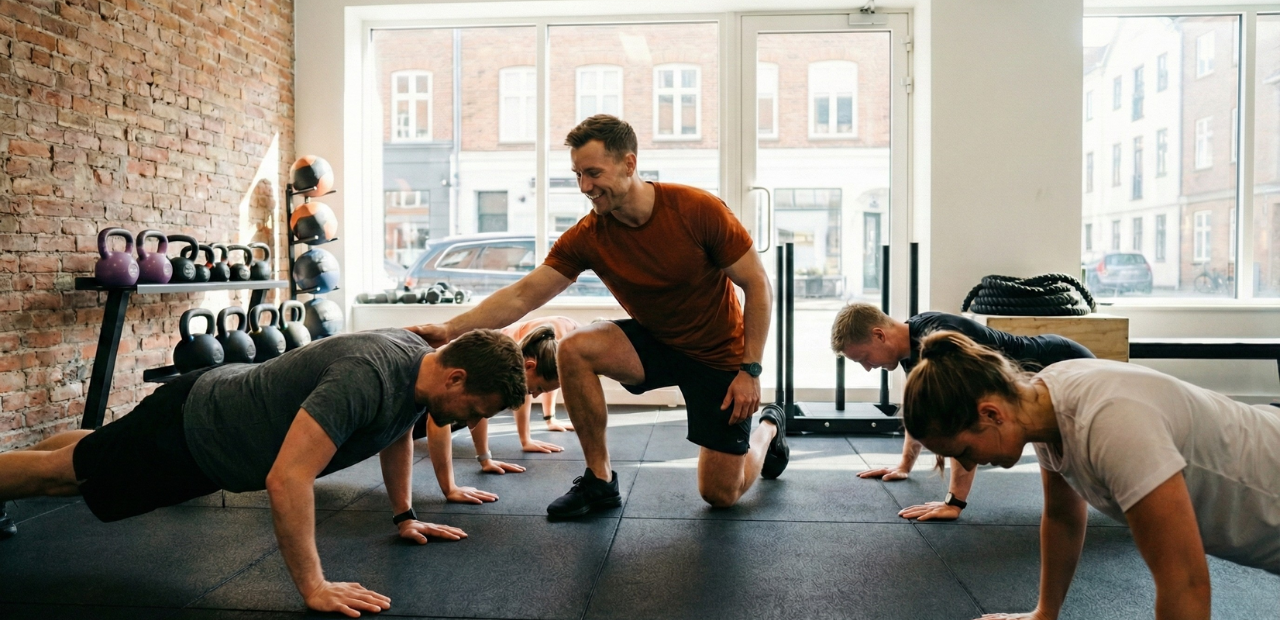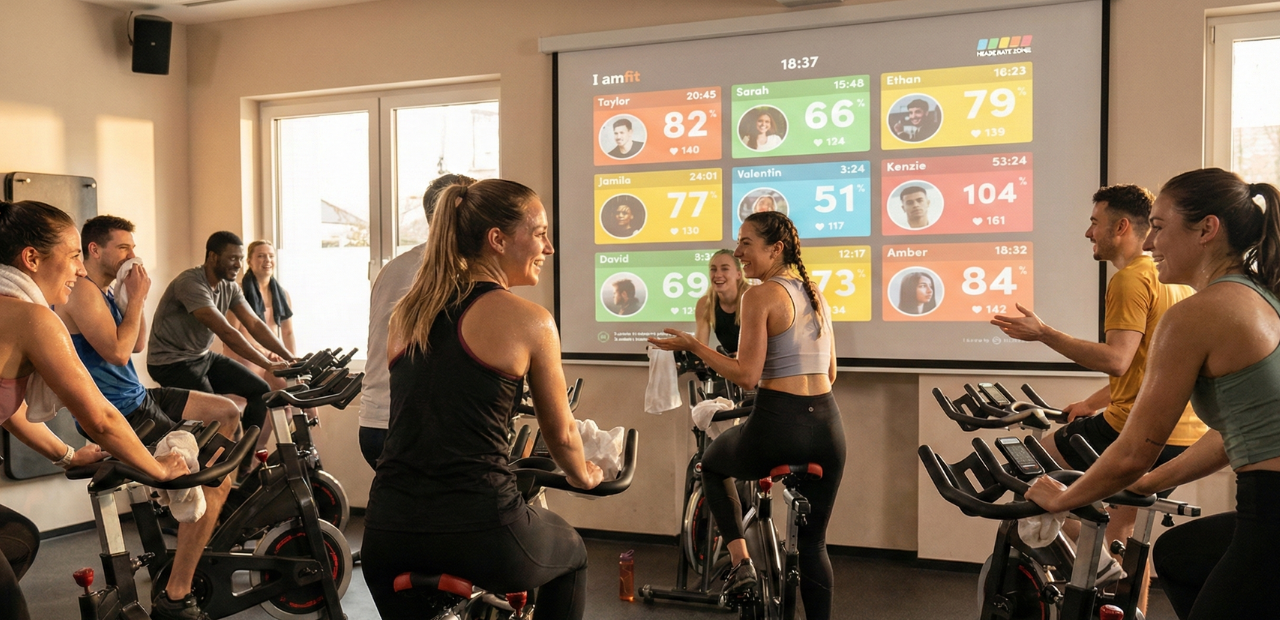If you’re a personal trainer, you’ve likely noticed it: AI is coming up everywhere in the fitness world, and it’s not just some passing trend.
It’s transforming how we train, how we connect with clients, and even how we support them throughout their fitness journey.
Over the last few years, artificial intelligence has gone from being a futuristic concept to a hands-on tool that’s reshaping the fitness industry.
And now it’s diving right into personal training, making it possible to get super personalized with each client’s goals, challenges, and progress.
Think about having a 24/7 assistant to analyze user data, track workout effectiveness, and help you optimize every rep and set.
In this article, we’re breaking down the latest AI trends in personal training. Whether you’re curious about AI’s potential or ready to bring it into your sessions, these trends are worth watching.
1. AI-Powered Workout Customization

One of the biggest challenges personal trainers face is learning how to create customized workout plans that truly align with each client’s unique needs.
But now you can integrate AI to analyze data like age, fitness level, goals, and preferences to design workouts that feel like they were made just for your client.
Let’s take an example, you’ve got a client who’s 45, loves strength training, but also wants to improve flexibility.
AI tools can sift through that info, look at past workout performance, and suggest tweaks that’ll keep them progressing without risking injury.
The beauty here? You gain valuable insights, allowing you to provide an experience as unique as each person who walks into your training space.
We’re already seeing some heavy-hitter tools making waves in this space. For instance, platforms like Virtuagym AI Coach use AI algorithms to continuously adjust and refine workout routines based on what’s working and what isn’t.
By the time your client’s done with a session, the app knows exactly what needs adjusting for next time, based on fatigue, recovery, and even sleep data.
2. Real-Time Form and Performance Tracking
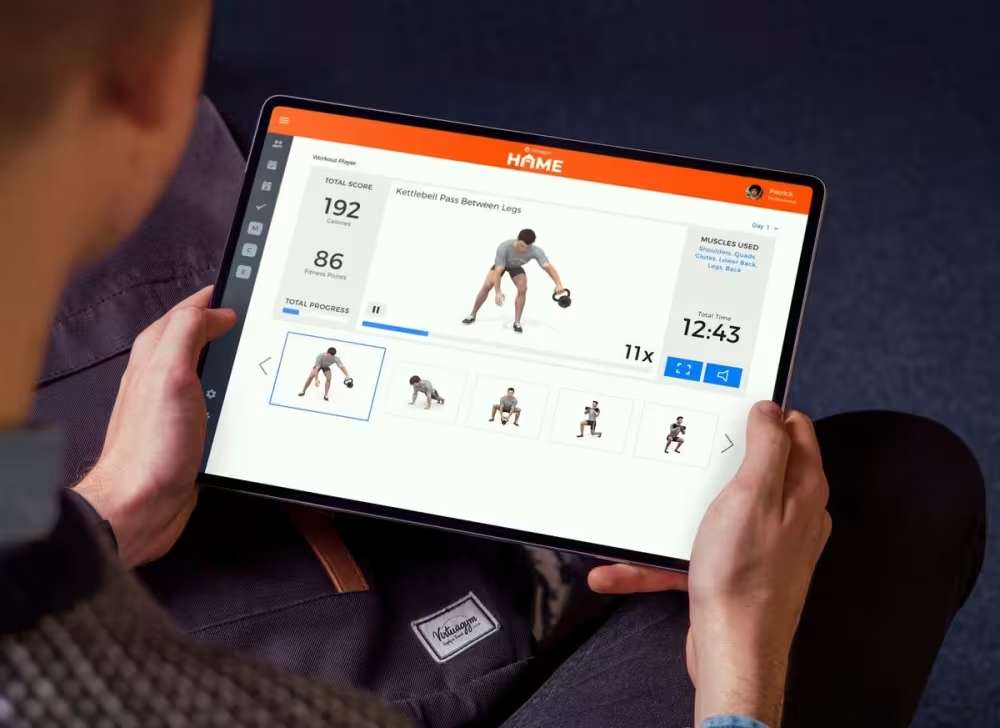
Let’s face it, watching a client’s form like a hawk is part of the job.
But what if you had an extra set of “eyes” to catch those little misalignments before they turn into big problems?
Maybe your client is squatting just a little too far forward, or their shoulder is dipping in a plank.
AI-driven tools can catch these slip-ups in real time, correcting form instantly, meaning fewer injuries, faster progress, and, honestly, clients who feel like they’re getting VIP treatment.
They don’t just feel supported; they feel like they’ve got an advanced coach on hand, every step of the way.
The benefits are huge. With effective progress tracking, you’re not only keeping clients safe, but you’re also helping them get better results from each session.
Think about it: when clients are moving efficiently, they’re building strength and endurance faster, leading to those ‘Wow!’ moments they came for.
Some big names are already leading the charge. Apps like Kaia Health and Tempo use AI to analyze movement patterns and deliver real-time cues, almost like having another coach in the room.
With real-time form tracking, AI is your new assistant, helping you deliver a safer, smarter, and more satisfying training experience for every client who walks in.
3. Virtual Personal Trainers and Chatbots

Imagine this: a virtual “you” who can be there for your clients anytime they need, even if it’s 2 a.m. and they’re wondering if they should have that midnight snack (probably not!).
AI-powered virtual trainers and chatbots are stepping in to fill the gaps, offering support and guidance when you can’t be there in person.
These virtual trainers are a big help for scalability. They can handle the repetitive questions (“Is cardio or strength better for weight loss?”), provide motivation, and even adjust personalized workout plans based on a client’s feedback.
This means you’re freeing up time to focus on high-value coaching, while clients still feel supported and connected.
Take Virtuagym’s AI Coach, for example. It’s like having a pocket trainer who guides clients through workouts.
Apps like this allow clients to get real-time answers and advice whenever they need it, so they’re never left hanging whether they need a form tip or a little pep talk.
The best part is that Virtual trainers and chatbots can create a sense of continuity. Your clients don’t have to wait for their next session to get support.
They’ve got a reliable, round-the-clock resource that keeps them motivated and on track, making it easier for you to manage your client load and still deliver a top-notch experience.
4. AI for Predictive Health and Fitness Analytics

Now, here’s where things get really next-level. What if you could see what your client’s body needs before they even know it themselves?
That’s the magic of AI-powered predictive analytics, which can identify trends in client health, performance, and even mood patterns over time.
With predictive insights, you’re not just reacting to your client’s needs, you’re staying a step ahead. AI tools analyze everything from workout data to recovery stats, showing patterns and making predictions.
So if a client’s performance is dipping or they’re on the edge of burnout, you know it early and can adjust their plan right on time.
It’s proactive coaching at its best, and it means clients are getting personalized attention that keeps them progressing without hitting those frustrating plateaus.
Tools like NEO Health and Oura Ring are already making strides in this area, tracking metrics like heart rate variability and sleep quality to give real-time insights into recovery and readiness.
5. Personalized Nutrition and Supplement Advice

As any trainer knows, workouts are just one piece of the puzzle. Nutrition is where clients have to pay extra attention.
And with AI now analyzing dietary habits, it’s taking personalized meal planning to a whole new level.
Imagine being able to provide each client with a customized nutrition plan that fits exactly with their lifestyle, preferences, and fitness goals. That’s the power of AI-driven nutrition guidance.
These AI tools don’t just stop at “eat more protein” or “cut carbs.” They dive deep, taking into account everything from food allergies to dietary preferences (vegan? gluten-free? AI’s got it covered).
AI can also tailor suggestions based on specific fitness goals, like muscle gain or fat loss, so your clients get meal plans that truly align with their needs without the hours of research.
These tools bring an all-inclusive approach to health, making it easier for clients to see the connection between what’s on their plate and their progress in the gym.
6. Biometric and Wearable Integration

We’re living in the age of smart tech, where clients are practically walking around with data-collecting devices on their wrists.
From smartwatches to fitness trackers, wearables are gathering real-time data like heart rate, sleep quality, and activity levels.
AI steps in to interpret all this data, helping you optimize workouts and keep an eye on recovery in ways that were once impossible.
Think about it, instead of guessing if a client’s recovered enough for a high-intensity session, AI can pull from wearable data to provide a precise readiness score.
This means you can adjust workouts on the fly based on how their body is actually responding, not just how they say they feel.
And for clients, knowing that you’re keeping tabs on their unique data boosts confidence that they’re getting the safest, most effective plan tailored to them.
Platforms like Neo Health and Apple’s Health app are leading the way here, delivering detailed insights on strain, recovery, and sleep patterns.
And Fitbit’s readiness scores make it easy for trainers to monitor recovery without needing to constantly check-in.
For those in the fitness business, this seamless integration means staying updated on client progress in real time.
You’re able to make smarter, data-backed decisions, which means clients stay on track, avoid burnout, and keep progressing, all with the support of AI and wearable tech.
Also, check out our guide on how you can integrate wearable tech in gyms.
7. Virtual Reality (VR) and Augmented Reality (AR) for Training
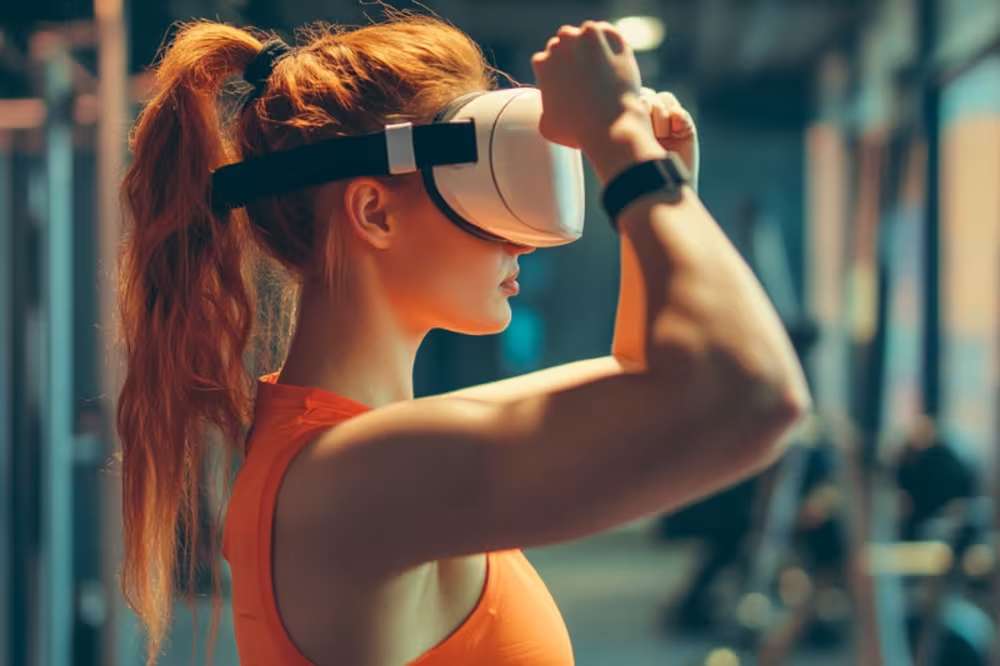
Think about taking your clients beyond the four walls of a gym and into a whole new world of fitness.
That’s what VR and AR are bringing to the table: immersive, interactive training experiences that can seriously elevate engagement.
VR gyms and AR-based exercises are transforming workouts from routine sessions into exciting, memorable adventures.
With VR, clients can step into a virtual gym, run through an obstacle course, or even “train” on a mountain peak.
They’re not just working out; they’re experiencing something new every time.
This kind of training keeps clients motivated, making it easier for them to stick to their routine. And then there’s AR, which can layer real-time guidance onto exercises.
Imagine clients seeing live adjustments on their form or game-like challenges they can complete right in their living room.
Companies like Supernatural and Holodia are already using VR to create gamified fitness environments, while AR apps like Aaptiv are incorporating interactive elements to guide clients through exercises with visual cues.
For clients who find the usual gym setup a bit repetitive, these immersive experiences can be a game-changer.
Read about the latest technology trends in the fitness industry here.
8. Automated Client Communication and Follow-Up

Keeping up with client check-ins, follow-ups, and reminders can feel like a full-time job on its own. But here’s where AI-driven automation steps in to lighten the load.
With automated messages and reminders, you’re able to stay connected with clients, keeping them engaged without spending hours on admin tasks. It’s like having a personal assistant that never takes a break.
AI-powered tools can send personalized reminders for workouts, check in on clients’ progress, and even follow up on goals, all without you having to lift a finger. This level of consistent communication makes a huge difference in client accountability.
Let’s say your clients get a motivational nudge or a quick “How’s it going?” message right when they need it.
It can keep them on track and feeling supported, even between sessions.
Virtuagym’s Lead Management Tool for example helps convert prospects into loyal clients by sending personalized messages, follow-ups, and promotions based on member behavior.
And it’s not just convenient; it frees up time for you to focus on what matters most: designing effective programs and delivering great sessions.
Future Outlook for AI in Personal Training

As AI continues to evolve, personal trainers are on the edge of an exciting new chapter in fitness. But with all the incredible advancements, it’s important to look forward thoughtfully.
Here’s what the future may hold for AI in personal training, along with some considerations trainers should keep in mind.
Emerging Trends on the Horizon
AI isn’t slowing down anytime soon. From smarter, hyper-personalized coaching platforms to advanced biometric tracking that understands clients on a whole new level, the future is packed with potential.
Soon there might be AI that can analyze mood or fatigue from facial recognition software or even generate real-time training adjustments based on a client’s daily readiness score.
It’s not just about “smarter” AI; it’s about creating a fitness experience that’s tailored like never before.
Ethical Considerations: Balancing Privacy and Progress
With all this data at our fingertips, ethical considerations are front and center.
Personal trainers and tech developers alike need to be mindful of data privacy. Clients should feel confident that their health information is secure and used responsibly.
Additionally, as AI takes on more of the routine tasks, there’s the question of maintaining a human touch.
Fitness isn’t just about numbers; it’s also about relationships, empathy, and understanding what truly motivates each person.
Keeping the Personal in Personal Training
Ultimately, AI should enhance, not replace, the personal aspect of personal training. The best results come when technology and human connection work together.
While AI can automate reminders, track progress, and personalize plans, it’s the trainer who brings empathy, encouragement, and that unique ability to connect with each client.
Finding a balance between cutting-edge AI and authentic client relationships will be key to moving forward successfully.
Conclusion
AI is transforming the personal training game, bringing tools and insights that were once out of reach and making them part of everyday practice.
From real-time feedback to customized nutrition plans, AI is here to help you deliver the kind of training experience that clients dream of efficient, engaging, and completely personalized.
But remember, AI is just that: a tool. It’s not a replacement for the dedication, empathy, and expertise you bring to the table.
The real magic happens when you combine these AI-driven insights with the human touch only you can offer.
By embracing these trends thoughtfully, you’re not only staying ahead of the curve; you’re elevating the way you connect with your clients, empowering them to reach their best potential.
